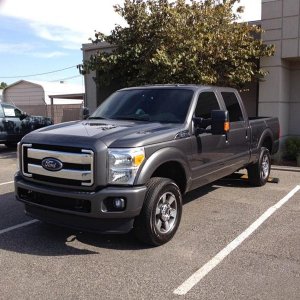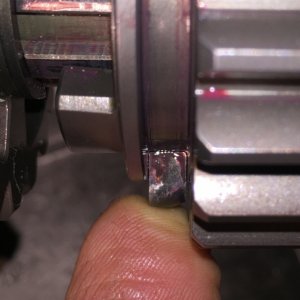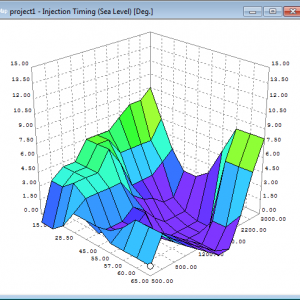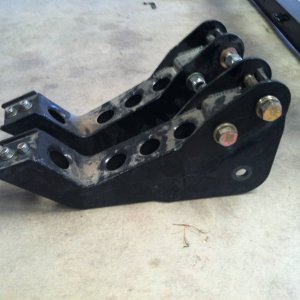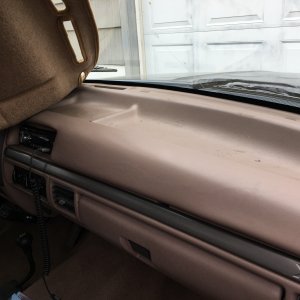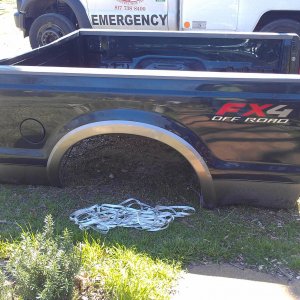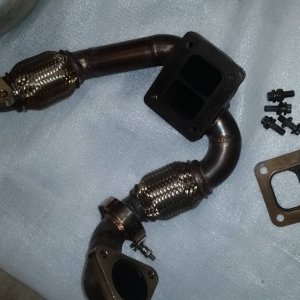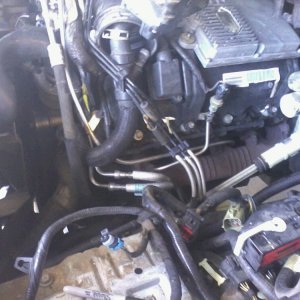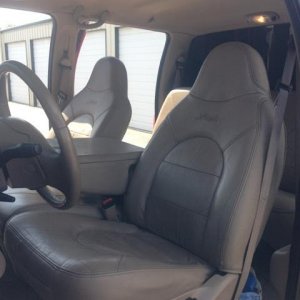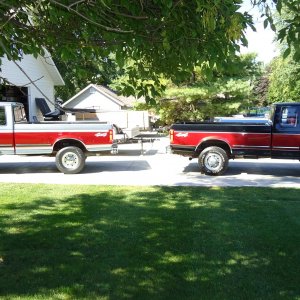The general equation describing fluid dynamics of this nature is the Hagen-Poiseuille (HP) equation:
dP = 8uLQ/(pi * R^4)
where dP is the pressure difference over the length of the system L, u is the dynamic viscosity (intrinsic to the oil), Q is the volumetric flow rate, and R is the pipe radius.
All injectors require sufficient volume (Q) and pressure (P) of oil to operate. Generally, larger injectors require more volume (Q) than smaller injectors. As can be seen by the HP equation, providing more volume (Q) to the injectors requires EITHER larger dP, smaller L, or larger R.
The pump provides the dP, which drives the volumetric rate (Q), and in practice is the single easiest way to provide more volume of oil, which is why many people opt for aftermarket HPOPs.
While the pump is the easiest thing to replace, the most EFFECTIVE way to increase volumetric flow rate (Q) at a constant supplied pressure (dP) is to INCREASE the radius (R) of the pipes supplying the oil. See that in the HP equation the radius (R) is raised to the 4th power! Small differences here will net drastic differences in the flow characteristics.
In the 7.3l oil supply system the oil log actually represents a larger radius pipe supplying oil to the injectors. In this region of the system the oil will flow the most efficiently and require the least pressure (dP) to move the same amount of volume (Q). Reducing the radius here will not help provide more oil to the injectors, it will further restrict the system.
Reducing that volume will speed up the time it takes to FILL the log with oil, ie. after a complete oil change, but will not provide more oil to the injectors given that the system is already full.
Going with the garden hose and fire hose analogy the question isn't about the volume of the hoses (oil log) but the restriction at the end (injectors). If both hoses have the same size nozzle restriction the larger hose will supply more volume. The only difference will be the time for them both to reach steady state, ie. fill up the hose.
I dont know if this equation is being explained exactly right.
This Hagen-Poiseuille equation is for a constant pipe size diameter. In this case the pipe sizes are changing in the same system.
Also its meant for a constant velocity which in the case of a heui system that is ever changing.
If you increase the radius of the pipe it makes for a larger area. A larger area means more volume. More volume means you need more pump to make up the difference.
If you decrease the total volume needed then you need less pump to meet demand.
Ask youself this if you fill a gallon jug and a 5 gallon bucket which will take longer if the flow rate filling both is the same.
If you incease volume of a given system you need more flow rate to fill it. You can either increase pressure to fill faster or decrease the volume of the system. Thats what these new oil rails do, they decrease the volume of the system needing less pump to meet the demand of the given injector.
If this didnt work the adrenaline wouldnt be able to keep up with the demand of the injectors.
Who knows of a truck that is running 400/300 with a single adrenaline?
This was copied from dieselsite's web page
OUR ADRENALINE PUMP IS DESIGNED FOR USE WITH THE FOLLOWING INJECTOR SIZES:
AA Code Single Shot -94-97 7.3L - stock to 200cc
AB Code Split Shot - Early 99 and California 97 7.3L - stock to 175cc
AD Code Split shot - 99.5-2003 7.3L - stock to 175cc
AC Code Single Shot - T444E and 7.3L aftermarket - stock to 200cc
AD Hybrids - 7.3L aftermarket - up to 285cc
Even dieselsite explains that the pump cant keep up with hybrid injectors larger than 285cc. If the pump supprted more volume they would know.
Also FFD is a great company and wouldn't put their rep on the line to make a little extra dough. These are cheap compared to a pump needed to support high demand systems.

